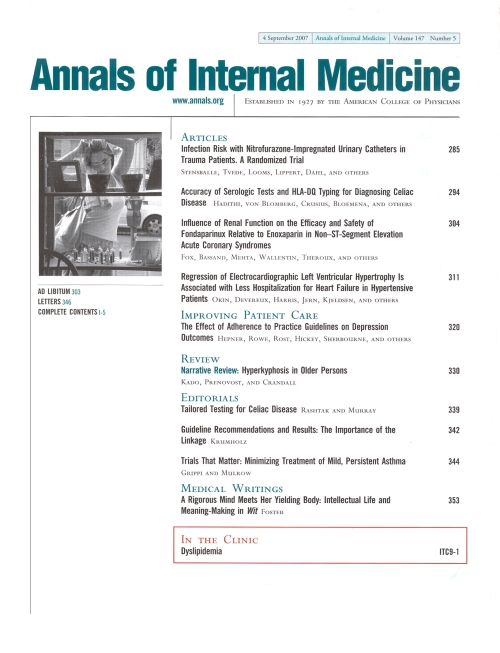
Extended thromboprophylaxis with aspirin noninferior to dalteparin for THA patients

Extended thromboprophylaxis with aspirin noninferior to dalteparin for THA patients
Aspirin versus low-molecular-weight heparin for extended venous thromboembolism prophylaxis after total hip arthroplasty: a randomized trial
Ann Intern Med. 2013 Jun 4;158(11):800-6. doi: 10.7326/0003-4819-158-11-201306040-00004Synopsis
786 total hip arthroplasty (THA) patients were administered daily subcutaneous injections containing low-molecular-weight heparin (dalteparin) for 10 days, starting the next morning after surgery. Afterwards, patients were randomized to receive dalteparin injections in combination with placebo aspirin tablets or receive aspirin tablets combined with placebo dalteparin injections for 28 days, to co...
To view the full content, login to your account,
or start your 30-day FREE Trial today.
FREE TRIAL
LOGIN
Forgot Password?
Explore some of our unlocked ACE Reports below!

Learn about our AI Driven
High Impact Search Feature
Our AI driven High Impact metric calculates the impact an article will have by considering both the publishing journal and the content of the article itself. Built using the latest advances in natural language processing, OE High Impact predicts an article’s future number of citations better than impact factor alone.
Continue



 LOGIN
LOGIN

Join the Conversation
Please Login or Join to leave comments.